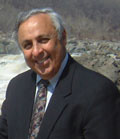|
 US
FDA : The
“Traditional”510(k) US
FDA : The
“Traditional”510(k)
- Part
III
Now,
let us open the notebook and flip through the pages.
This 510(k) has numbered tabs. You could also use letters rather than
numbers. All the pages are white. The pages are 8.5 inches by 11 inches in size with a 1.5"
(3.8 cm) margin between the left edge of the paper and the left margin of
the text. This leaves enough space for FDA to bind the 510(k) in the review
jacket.
The
pages can
be
consecutively numbered throughout the submission.
Alternatively, numbering pages by section can be done. For example: Section
1 pages could be numbered 1-1, 1-2, etc. Section 2 pages will then be
numbered 2-1, 2-2, etc. Sequential numbering can help reduce errors and is
easier to correct if a page is added or removed at the last moment before
submission. Numbering
is important because if someone removes a page for photocopying or, perhaps,
drops the submission, without consecutive numbering, “all the Kings horses
and all the King’s men” could not put it together again. You should not
permanently bind the submission because the FDA needs access to individual
pages.
Notice that
the 510(k) submission can have tables or charts, diagrams, drawings,
figures, photos or illustrations. Be sure to give them a title and a number and refer to them
properly in the text. Note also
that all the pages are in English or English translation is included.
Notice
also that some pages are stamped “CONFIDENTIAL”. These pages contain
commercially valuable information that you do not want to see in the hands
of your competitors. For
example, pages containing specifications, engineering drawings, test
protocols and laboratory reports are usually stamped as confidential.
Overview
of Format
If
you looked at a library of 510(k) submissions, they may vary a lot in size
but they all have the same types of information. The following is an example
of a format that can be used. The
actual order is not as important as the types of information that are
necessary. Not all of these will be applicable to your specific device.
For example, you do not need a “Software” section if your device
has no software. Here is the
list:
-
Cover Sheet or Cover Letter
-
Table of Contents
-
General Information
-
Indications
for Use Statement
-
Device Description
-
Proposed Labeling
-
PerformanceTesting
-
Clinical Data
-
Substantial Equivalence Information
-
Information on Sterilization
-
Software
-
Applicable Standards
-
510(k) Summary or Statement
Each of these sections, in turn, contain
information that is important for FDA’s review.
We shall discuss each of the sections next time.
Also, do not forget to include a copy of the Medical Device User Fee
Cover Sheet with your submission.
Stay
safe and healthy!
Norman
F. Estrin, Ph.D., RAC
June
6, 2003 Back
| Back To Top|Next Page
|
NOTE
TO READERS:
Please understand that in order
to make FDA requirements more understandable, I do simplify some of
the language and omit some details. You must rely on the actual
regulations-not any of my columns to ensure you meet FDA requirements.
|
|
|
|
|
If you have
questions related to the contents of this column, please
write to Dr Norman Estrin at yourFDAconsultant@medisourceasia.com
and he will try to answer you. This column is for you
and we welcome your suggestions on how to improve it.
|
|
Dr. Norman Estrin
is a
recognized authority in the medical device and cosmetic
industries. He has had over 30 years of experience in
directing scientific and technical and regulatory programs
in these industries. He is Regulatory Affairs
Certified (“RAC”) by the Regulatory Affairs Professional
Society. Dr. Estrin is the founder of ESTRIN CONSULTING
GROUP, INC. (ECG). ECG offers cost-effective,
experienced consulting to medical device firms on FDA-
related issues. Its Services include preparing 510(k)
and other FDA submissions, regulatory strategy development
and acting as agent and official correspondent for non-U.S.
medical device companies.
|
|
For more information, contact him
at
yourFDAconsultant@medisourceasia.com
or visit his website: http://www.yourFDAconsultant.com
|
|
|